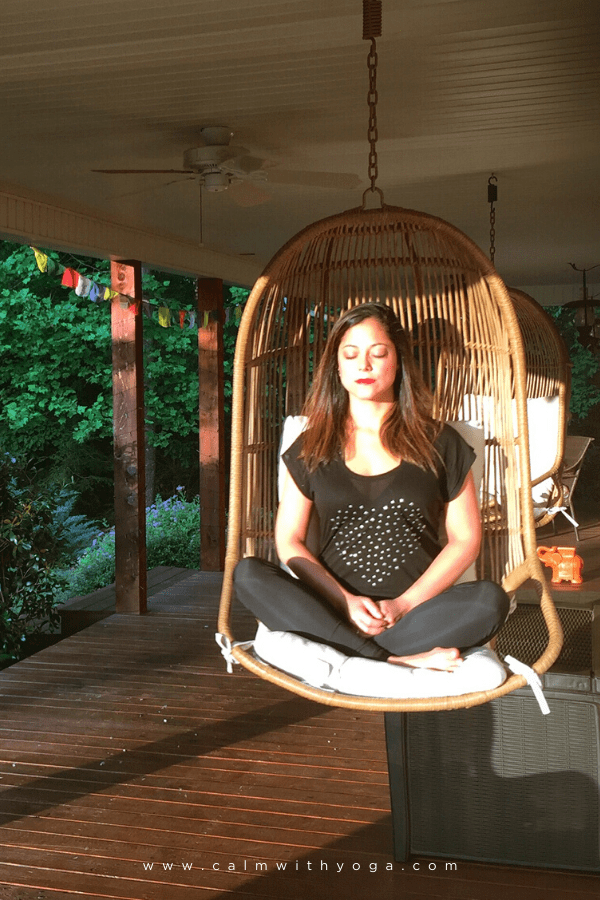– Pema Chodron, Tibetan Buddhist Nun & Author With the number of courses and training and resources on the subject, you’d think practicing mindfulness is really involved or complicated, though in its essence it’s a simple process. The human mind loves to overcomplicate things. The modern human mind is also untrained in the ‘essence of being’ and so, we resist mindfulness, presence, and awareness because, in a fast-paced, overstimulated world, we aren’t familiar with it. When I was first introduced to the concept of mindfulness I remember thinking: “You’re kidding me right? That’s it? That’s all there is to it?” I perceived it as so elementary and overly simple that I dismissed it with a slight air of arrogance and a vibe of: “Yeah yeah yeah, I already know how to do that.” But the truth was, I actually hadn’t understood it, though I thought I had. You may already be familiar with terms such as mindful eating and maybe even some of the more well-known mindfulness exercises like: Body scan meditation – where you bring awareness away from the surrounding environment and towards the inner realm of bodily sensations and physical sensations as a means of dropping into yourself. Walking meditation – where every step is felt with awareness and presence. Breath awareness guided meditation – uses the breath as a mindfulness training tool. We keep out awareness on each inhale and exhale and when the mind wanders, which it surely does, we bring our attention back to the breath. It doesn’t matter what form of meditation you choose – what matters is that you stick with it because of the effects of mindfulness (when practiced regularly) can catapult you into higher states of thinking, feeling, creating, being, and doing. Simply put: Mindfulness is a homecoming. A moment where your mind, your senses, and your entire being is 100% present and engaged fully in the here and now. Not in the past. Not wondering about the future. Just here. At home in your body. In your Temple. Flowing with your breath. Not judging what is, or resisting what’s to come. Just here. Just being.
The Definition of Mindfulness:
Mindfulness is such a buzz word today because… mindfulness works, actually. Meditation is not invasion; it is a serene encounter with reality. – Thich Nhat Hanh, Buddhist monk & author If you research or go on Google, you’ll find plenty of reliable studies and literature that demonstrate just how beneficial this practice can be for taming our anxiety. It also has a host of health benefits. The practice of mindfulness can help you improve mental health, physical well-being, and overall healing – even strengthening the immune system and lowering blood pressure. Creating the habit of present moment awareness in everyday life helps you improve emotion regulation so you’re not so easily overtaken by your emotions. It helps you better manage negative emotions and thought patterns. Mindfulness techniques can help you deepen self-compassion and therefore also empathy for others. One of the leading experts in this movement is Jon Kabat Zinn, Ph.D. He’s the founding executive director of the Center for Mindfulness at the University of Massachusetts, professor of medicine emeritus, and creator of the Mindfulness-Based Stress Reduction (MBSR) program. He’s also authored numerous scientific papers and studies on the clinical applications of mindfulness. According to Kabat Zinn, the definition of mindfulness is: In his session at Google Talks, he describes the process of letting go of our need to “do do do” in order to be able to step into the moment and “just be”:
The Science of Mindfulness: What Studies Reveal About the Health Benefits of Mindfulness
Kabat Zinn’s published mindfulness studies seem to demonstrate promising results, for example: Certifiable diagnosis… Because it’s all about doing, and there is no recognition of being, and so in a sense, there’s no place to rest. And what this work is really all about is saying there’s plenty of places to rest, and there’s plenty of time. It’s not like you’ve gotta go home and squeeze this into your busy day. Because awareness is boundless and infinitely available in every moment no matter what you’re doing… Non-doing means, radically speaking, giving up wanting anything else to happen even in the next moment… For me, meditation is an act of love and an act of sanity – just to stop for a fraction of a second and drop into being. 1.) “The Clinical Use of Mindfulness Meditation for the Self-Regulation of Chronic Pain”: 90 chronic pain patients underwent a 10-week mindfulness meditation program. They found that: “Statistically significant reductions were observed in measures of present-moment pain, negative body image, inhibition of activity by pain, symptoms, mood disturbance, and psychological symptoms, including anxiety and depression. Pain-related drug use decreased. Activity levels and feelings of self-esteem increased.” (1) 2.) “Three-Year Follow-up and Clinical Implications of a Mindfulness meditation-based Stress Reduction Intervention in the Treatment of Anxiety Disorders”: In the study prior to this follow up 22 anxiety disorder patients showed “clinically and statistically significant improvements in subjective and objective symptoms of anxiety and panic” after an 8-week mindfulness meditation program. In this 3 year follow up study, 18 of the initial 22 participants were assessed. These subjects showed “maintenance of the gains obtained in the original study.” The study concluded that ongoing mindfulness meditation practice can have “long term beneficial effects in the treatment of people diagnosed with anxiety disorders.” (2) Harvard neuroscientist Sara Lazar, PhD. runs a research lab with the purpose of studying the effects of meditation, mindfulness, and yoga on the brain. More specifically, the effects these things have on our cognitive and behavioral processes. She says: Her journey into mindfulness research began when she sustained an injury while training for a marathon: We also found evidence that meditation may slow down the age-related atrophy of certain areas of the brain. (3) So she decided to study why it was she felt such a tangible shift, and what was going on inside her head during these practices. So I started practicing yoga as a form of physical therapy. I started realizing that it was very powerful, that it had some real benefits, so I just got interested in how it worked. The yoga teacher made all sorts of claims, that yoga would increase your compassion and open your heart. And I’d think, ‘Yeah, yeah, yeah, I’m here to stretch.’ But I started noticing that I was calmer. I was better able to handle more difficult situations. I was more compassionate and open-hearted, and able to see things from others’ points of view. (4) She set out to uncover what happens to our brains as a result of practicing these activities and found that a consistent mindfulness practice: 1- It can increase thickness in the cortex, the part of the brain that’s associated with self-regulation capacity, the ability to learn from past experience, and optimal decision making. (5) This can be key to helping you manage moods and anxieties. 2- Increase gray matter in the hippocampus, which counters the degenerative effects of anxiety and chronic stress. Those who experience anxiety and chronic stress are found to have a smaller hippocampus. Science points to the fact that this particular brain region plays an important role in the cultivation of resilience. (6) 3- As little as 8 weeks of consistent mindfulness practice is enough to tame and shrink your amygdala (the brain’s emotional center). What’s more, Lazar’s research shows that the amygdala taming is correlated with the change in stress. “The more stress reduction people reported, the smaller the amygdala got.” (7) 4- Again, just 8 weeks of consistent mindfulness practice is enough to strengthen brain areas associated with: mind wandering and self-relevance, learning, cognition, and emotional development, empathy, and compassion. (8) A word of caution here, before you start thinking that mindfulness is some magic pill that will wipe anxiety or any other form of dis-ease out on its own. The practice works best as a part of a holistic system. It’s one of many resources and components needed for nervous system rebalancing. It is not, however, a stand-alone as Lazar reminds us here:
How To Practice Mindfulness Using Your Breath
The Buddha taught his monks the practice of breath awareness meditation (aka Anapana Breathing.) Follow the prompts of this guided meditation to practice. REFERENCES : (1) https://link.springer.com/article/10.1007%2FBF00845519?LI=true (2) http://www.sciencedirect.com/science/article/pii/016383439500025M (3) https://scholar.harvard.edu/sara_lazar/home (4) https://www.washingtonpost.com/news/inspired-life/wp/2015/05/26/harvard-neuroscientist-meditation-not-only-reduces-stress-it-literally-changes-your-brain/?utm_term=.f05785ffffe6 (5) https://www.ncbi.nlm.nih.gov/pmc/articles/PMC1361002/ (6) https://hbr.org/2015/01/mindfulness-can-literally-change-your-brain (7) https://academic.oup.com/scan/article/5/1/11/1728269/Stress-reduction-correlates-with-structural (8) https://www.ncbi.nlm.nih.gov/pmc/articles/PMC3004979/

